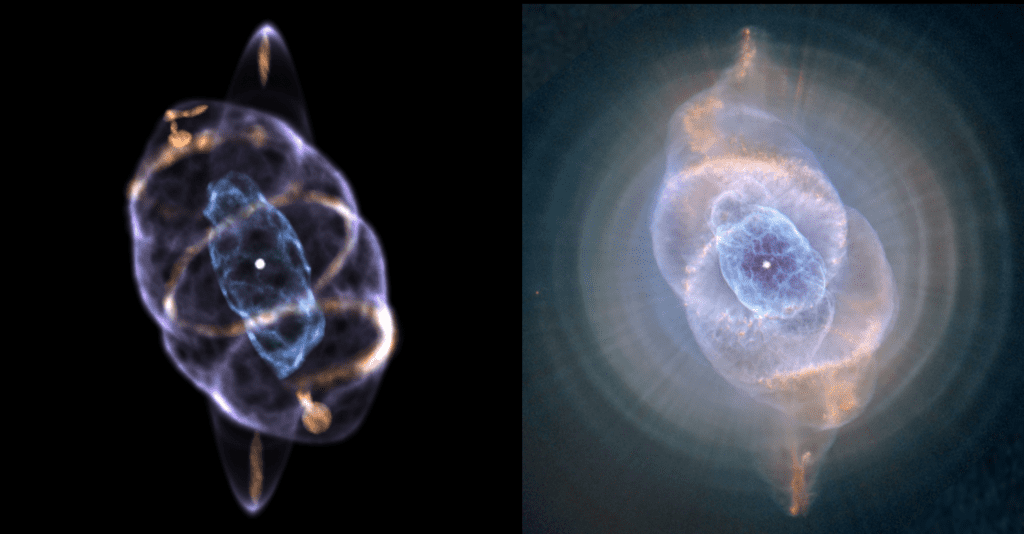
Deep inside the constellation Draco lies one of the more beautiful known nebulas in space. Also known as NGC 6543 and Caldwell 6, the Cat’s Eye Nebula was discovered by William Herschel on February 15, 1786. Thanks to the relatively close distance to Earth (if one can call 3,300 light-years “close”), the Hubble space telescope has been able to get some great shots of the object throughout the years. Now, an astronomy enthusiast has taken Cat’s Eye research to the next level by co-creating the first-ever computer-generated 3D model of the nebula, which hints at the presence of a binary star at its center.
According to a statement, a high school graduate and future Stanford University student named Ryan Clairmont is responsible for the development of the new 3D model. Clairmont used SHAPE, a 3D astrophysical modeling program developed by Wolfgang Steffen of The National Autonomous University of Mexico and Nico Koning from the University of Calgary, to create the 3D model.
Based on RAS’s assessment, this work improved our knowledge of the nebula’s momentary jets. The star at the center of Cat’s Eye released jets of dense gas, and these jets traced out circles like a spinning top. This is evidence that the central star of the nebula is likely a binary system and the cause of the symmetrical rings.
“The planetary nebula known as the Cat’s Eye Nebula (NGC 6543) has a complex, point-symmetric morphology that cannot be fully explained by the current theory of planetary nebula formation, the interacting stellar winds model,” the researchers wrote in their study, published in the journal Monthly Notices of the Royal Astronomical Society. “In order to reveal the 3D structure of the Cat’s Eye Nebula, we created a detailed 3D morphokinematic model of this nebula using a [N II] image from the Hubble Space Telescope and five different position–velocity diagrams using the SHAPE code. This modeling approach has revealed point-symmetric partial rings, which were likely formed by a precessing jet.”
Due to its round appearance, Cat’s Eye is classified as a planetary nebula. Because they reveal the sun’s ultimate fate, astronomers are eager to learn more about this population of nebulas.
“When I first saw the Cat’s Eye Nebula, I was astounded by its beautiful, perfectly symmetric structure,” Clairmont said. “I was even more surprised that its 3D structure was not fully understood. It was very rewarding to be able to do astrophysical research of my own that actually has an impact in the field. Precessing jets in planetary nebulae are relatively rare, so it’s important to understand how they contribute to the shaping of more complex systems like the Cat’s Eye. Ultimately, understanding how they form provides insight into the eventual fate of our Sun, which will itself one day become a planetary nebula.”


